One of the most important scientists in medical research was Otto Warburg whose presentation at the 1966 Nobel Laureate conference in Lindau, Germany, was entitled “The Prime Cause and Prevention of Cancer”. Based on his meticulous experiments and independently verified thousands of times, Dr. Otto Warburg knew the prime cause of cancer. What he discovered was that oxygenation of our body cells is the key issue. A normal cell derives the energy that it uses for function by a complex series of biochemical reactions that yield energy. The normal use of oxygen results in respiration, also known as oxidation, something that takes place in the nucleus of the cell. If there is a deficiency of oxidation within the cell, energy production is by fermentation, a less efficient way of producing energy. The resulting energy deficit may be the underlying cause of the sensation that we call fatigue, as well as affecting the structure and functions of the cell that influences the process of becoming cancerous. Once a cell has become cancerous, there is no way to return it back to its normal functioning. It must be destroyed. So the key is to kill existing cancerous cells while preventing new cancerous cells from developing. It is the long term deficit over years that finally erupts as cancer and a salient preventive measure is appropriate nutrition.
Oxygenation: Key to Health or Disease
The major message is that the normal delivery of oxygen and its use in respiration within cells is vital to complete health, resting heavily on the pioneering work of Dr. Otto Warburg. Most of us give little thought to what we do with the oxygen that we extract from the air by breathing. We are aware, of course, that oxygen is picked up by the hemoglobin in our red blood cells. The action demands an intricate biochemical transfer of oxygen from the lung alveoli to those cells. They then travel in the blood stream to all our body tissues and another complex reaction transfers oxygen from the red blood cells to the cells that make up all our tissues and body organs. This transfer mechanism depends on the health of the cell membrane that is at least partly dependent on the ingestion of the vital omega-6 and omega-3 polyunsaturated fatty acids (PUFAS).
Our cells, and we have between 70 and 100 trillion of them, have an extraordinarily complex structure. Each one, with the exception of red blood cells, has a nucleus, surrounded by a fluid called cytosol. The outer membrane of each cell, known as the plasma membrane, represents a potential barrier to the transfer of nutrients, including oxygen, from red blood cells to the cytosol. Oxygen, vitamins, and essential minerals then have to cross the membrane around the nucleus where respiration gives rise to an energy storage molecule called adenosine triphosphate (ATP). If this transfer is not complete, respiration declines and the cell uses fermentation in the cytosol to synthesize ATP.
This essential transfer across membranes depends on what is known as fluidity. The nearest that we can get to describing cell membrane function simply is that they require fluidity similar to the fluidity in a soap bubble, but much more complicated. Omega-6 and omega-3 PUFAS are essential oils obtained from ideal nutrition and they help in maintaining this fluidity, enabling oxygen transfer and absorption of cell nutrients to take place.
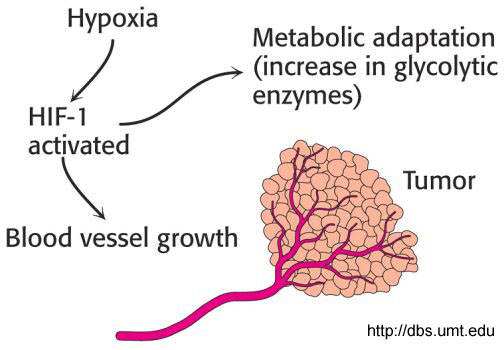
Oxygen, the primary nutrient, then has to be consumed in the process of synthesizing ATP. It is, of course, useless to have oxygen transferred into cells if it then remains unused. The fuel that is burned (oxidation results from the combination of oxygen with a fuel) in this process is glucose and one of the vital components is vitamin B1 (thiamine), a nutrient that I have emphasized repeatedly on this forum. Deficiency of this vitamin, together with an excess of simple carbohydrate, causes the ancient scourge of beriberi.
One of the known factors in this disease was reported by Japanese investigators many years ago. They found that the oxygen saturation of arterial blood (on route to body tissues) in beriberi victims was very low. The venous oxygen saturation was very high (blood returning to the lungs for oxygenation). This means that the pickup of oxygen at the lung was poor and it was transferred to the venous circulation without doing its job in the cells. It is therefore possible that long term, low grade thiamine deficiency could well be the forerunner of cancer.
Thiamine, Cancer, Diabetes and Neurodegeneration
Recently it has been found that low dose administration of thiamine stimulates cancer cells in an animal model, while very high doses inhibit their growth. Diabetes type I is pancreatic insulin deficiency. Type II is insulin resistance. Alzheimer disease is associated with glucose metabolism and may be diabetes type III. Cancer may turn out to be diabetes type IV. Reading between the lines, it looks as though thiamine metabolism is a key factor in causing many diseases because of its role in oxidation. This information is also important in understanding why malnutrition, particularly involving an excess of sugar, as is common today, is causing so much functional change in millions of people.
The so-called psychosomatic symptoms are often due to the early stages of beriberi, a disease where changes in the control mechanisms of the autonomic nervous system have long been known to occur. Thus the reduction of normal oxygenation and oxidation in the production of cancer is emphasized and it may well be that we can extend the principle to the cause of many different diseases. The brain is the most oxygen consuming organ in the body so that even minor deficiencies of oxidation can affect its performance. Since the lower brain contains the mechanisms of automatic control of the autonomic endocrine axis, it could explain why so many publications in the medical literature report an association of autonomic nervous system dysfunction with a variety of organic diseases that are so common in our world today.
Considering Malnutrition in the Presence of Abundance
A little history may help us to understand why various forms of malnutrition are so easy to neglect when we fail to follow the rules set by Mother Nature. Beriberi often broke out in Japan when there was increased affluence. The reason was really quite simple. Brown rice is the full grain and the vitamins needed for processing the starch are stored in the cusps around the grain. White rice is produced by milling the cusps off the grain and this was performed at a rice mill, a relatively expensive procedure for many people. The cusps were given to feed pigs and it is paradoxical that the pigs were better fed than the humans. White rice was therefore considered to be a marker of affluence and caused many people to set the milled rice in a silver bowl and invite their friends to dinner. They did not realize that they were inducing the common dread illness that they all knew about.
Can we take a leaf out of their book and compare our affluence of today with what happened in Japan years ago? Sugar and simple carbohydrate are dangerous commodities that may well be one of the commonest causes of disease in Western civilization. Consider this together with the absence of appropriate PUFAS and other essential nutrients and we cannot deny that malnutrition is today very much alive and well.
We need your help.
Hormones Matter needs funding now. Our research funding was cut recently and because of our commitment to independent health research and journalism unbiased by commercial interests, we allow minimal advertising on the site. That means all funding must come from you, our readers. Don’t let Hormones Matter die.
Yes, I’d like to support Hormones Matter.
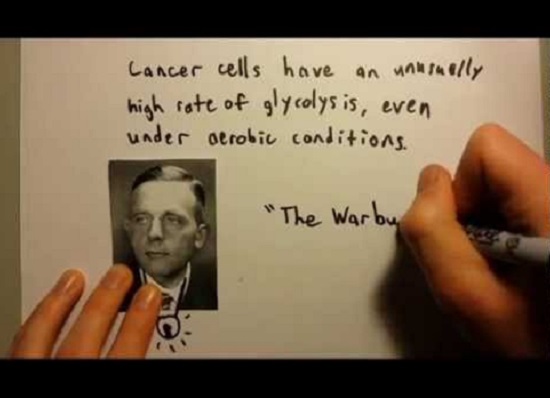

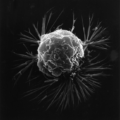




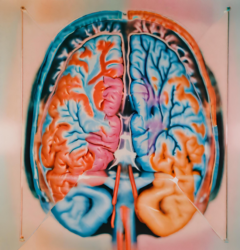




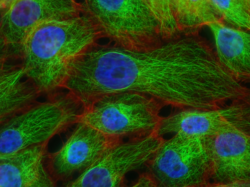

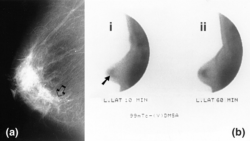
Dr. Lonsdale, Thank you so much for the information that you are making available in this website! Dr. Lonsdale, I read this article that got me confused. Is it possible that the Transketolase test may give false negative results because it does not take in consideration the serum level of the transporter-protein? Please advise. Here is the information: “Researchers knew that the body uses special proteins to transport thiamin into red blood cells as part of the transketolase-enzyme process and decided to measure these thiamin-transporting proteins. They found abnormally high transporter-protein levels. Their discovery led researchers to conclude that the thiamin-transporting proteins raised transketolase enzyme activity to normal levels, fooling scientists into believing diabetics had enough thiamin. Thornalley is conducting more studies to determine whether low thiamin levels cause small blood vessel damage, or if damaged blood vessels cause the kidneys to excrete too much thiamin.` https://www.nutritionexpress.com/showarticle.aspx?articleid=902
I agree that the article is confusing. Yes, transketolase is a thiamine requiring enzyme. What happens in thiamine deficiency is that there is an increased production of transporters, evidently an attempt to compensate for the deficiency. Therefore what the manuscript reports is the result of thiamine deficiency. Thornalley has done a lot more work on thiamine deficiency in diabetes and has shown that high blood sugars damage the kidney tubules and thiamine is lost in the urine.
Dr. Lonsdale, why diabetics patients loose too much thiamine when urinating? I was reading an interesting article: http://www.actabp.pl/pdf/3_2004/839.pdf Is that why thiamine also has a role in the protection of sun UV? I am quite sure that you still have to expose yourself to the sun since vitamin D is in reality an important hormone. However, it makes me wonder how deficient we are since thiamine is more used that I ever imagine before.
Hyperglycemia (high blood sugar) damages kidney tubules, possibly by causing thiamine deficiency. The kidney tubules allow the passage of thiamine into the urine, thus increasing the deficiency. Large amounts of thiamine are found in the urine of diabetic patients. Yes, vitamin D is made in the skin by exposure to UVL, and there is no doubt that we were designed to live under the sum so why are we afraid of the sun? The fact is that Mother Nature expects us to be fit so that exposure to sunlight does its work efficiently. In our collective ignorance, we have equated tanning with “becoming fit”, whereas it is really nothing more than a protection from excessive sunlight, a gift by Mother Nature.
Dr. Lonsdale, I read your article talking specifically about the this test and was able to understand. Thanks.
I lost my daughter to brain cancer and the statistics for the number of people expected to get cancer are depressing. It is ironic that a substance giving so much pleasure may be the most dangerous initiator of disease that we consume without giving it a thought
I’m so sorry for your loss, Dr Lonsdale.
I never considered that low grade thiamine deficiency could well be the forerunner of cancer. It really appears that impaired glucose metabolism not only leads T2D but also cancer.
So the Warburg effect is basically the conversion of most pyruvate to lactate through fermentation, even when oxygen is present.
In that Cancer and Metabolism journal they say they say that PDH by pyruvate dehydrogenase kinase isoforms 1 to 4 (PDK1 to 4) inactivates PDH, leading to a reduction, in pyruvate conversion to lactate by lactate dehydrogenase A (LDHA). Are we observing a inactivation or are we observing severe thiamine deficiency making ROS higher and higher and also explains why cancer patients crave sugar as they are trying to feed energy in the system but due to impaired thiamine metabolism it just feeds more lower lactic acid energy, what a horrible double edge sword.
I lost my mother to breast cancer January last year and this just give real food for thought, thank you Dr Lonsdale, one day, i hope to give you a call and discuss thiamine as i have become rather obsessed about it lately.